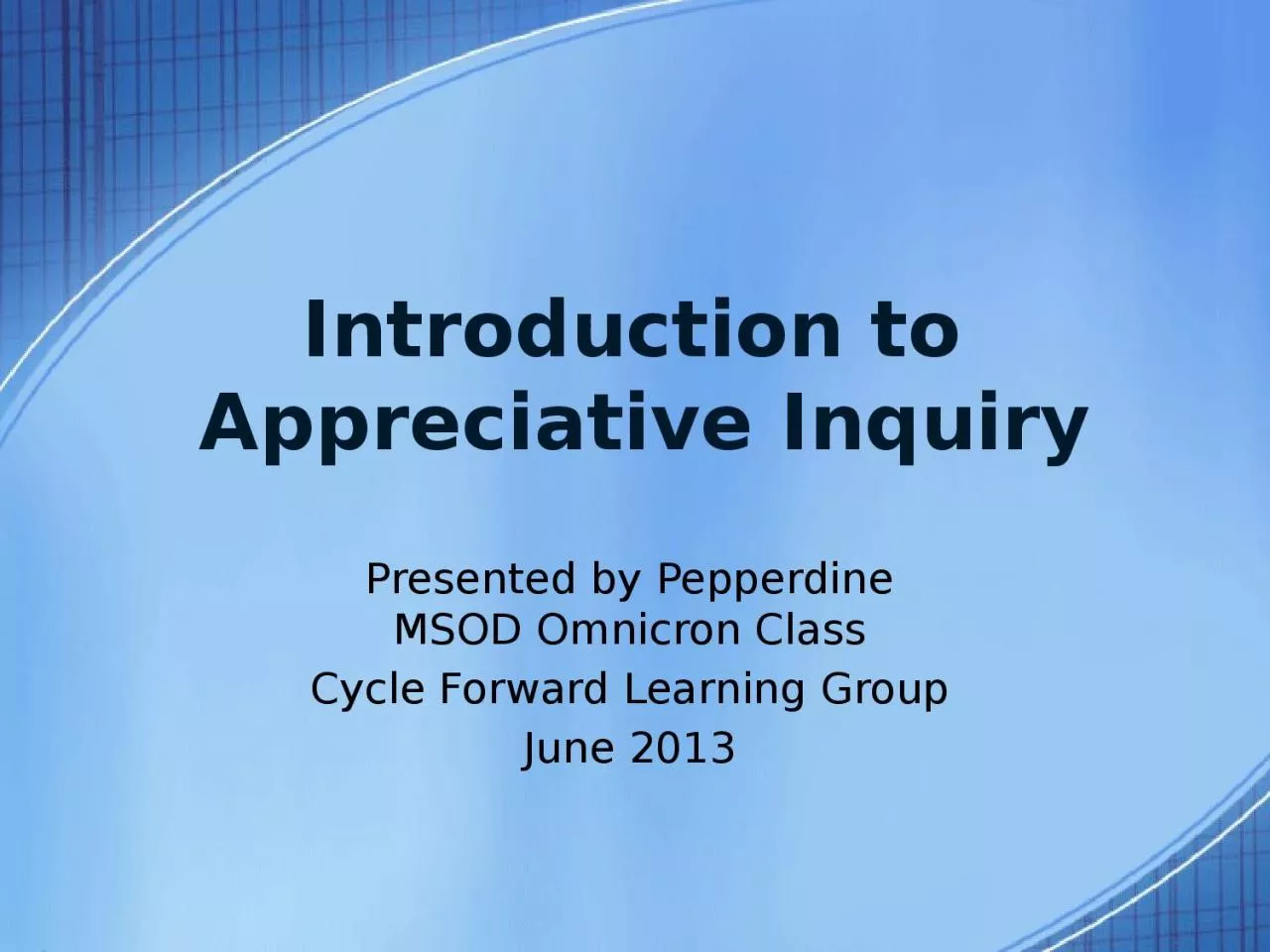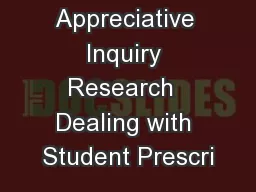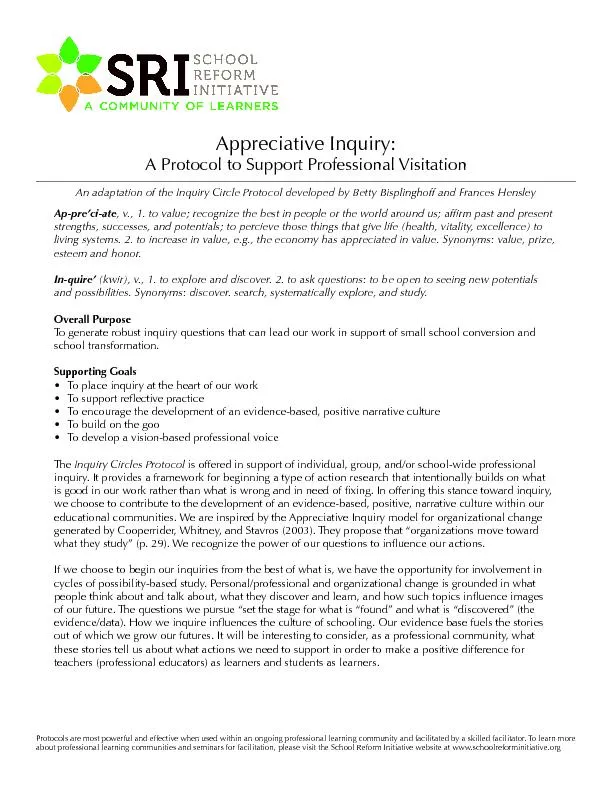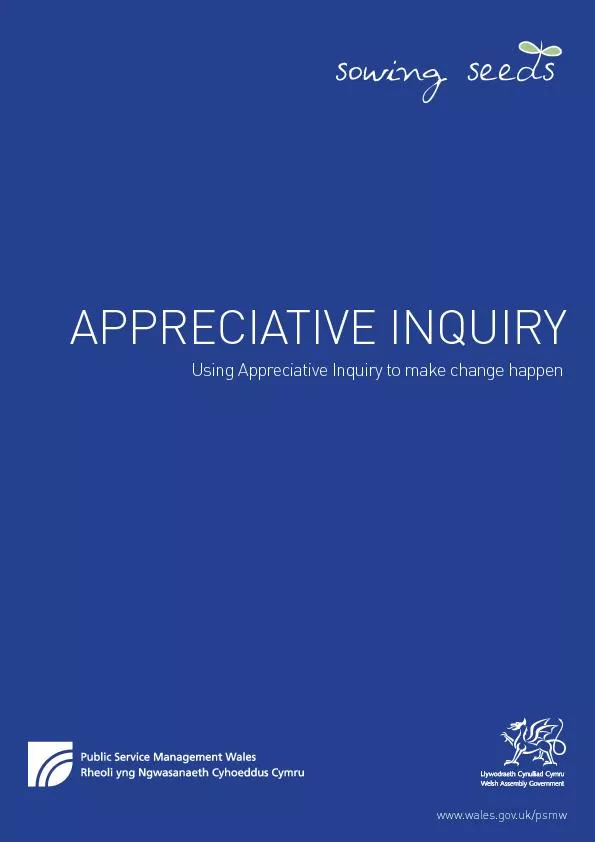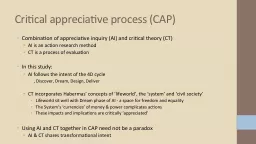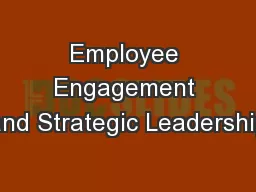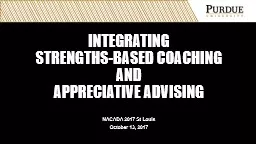PPT-Introduction to Appreciative
Author : quinn | Published Date : 2023-09-23
Inquiry Presented by Pepperdine MSOD Omnicron Class Cycle Forward Learning Group June 2013 Module Objectives Gain basic understanding of Appreciative Inquiry AI
Presentation Embed Code
Download Presentation
Download Presentation The PPT/PDF document "Introduction to Appreciative" is the property of its rightful owner. Permission is granted to download and print the materials on this website for personal, non-commercial use only, and to display it on your personal computer provided you do not modify the materials and that you retain all copyright notices contained in the materials. By downloading content from our website, you accept the terms of this agreement.
Introduction to Appreciative: Transcript
Download Rules Of Document
"Introduction to Appreciative"The content belongs to its owner. You may download and print it for personal use, without modification, and keep all copyright notices. By downloading, you agree to these terms.
Related Documents

